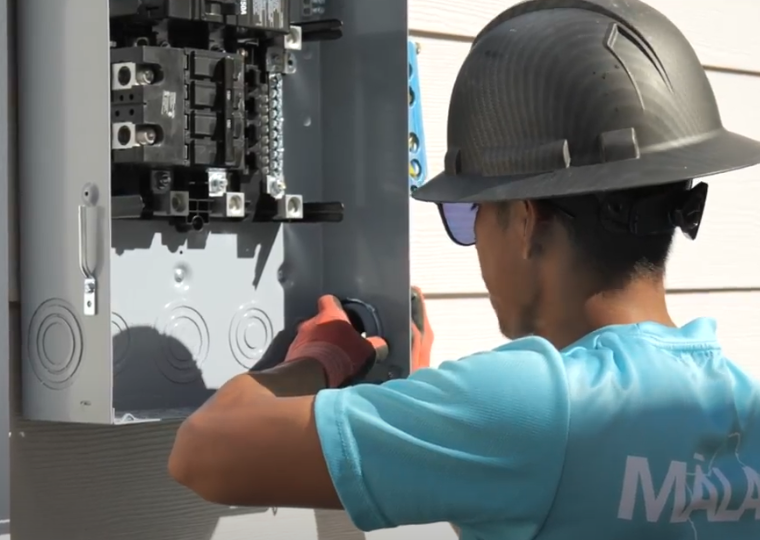How does the Hawaii Solar Tax Credit Work?
Disclaimer: Malama Solar are not tax professionals, and do not offer tax advice or other professional tax guidance. This article should not be used as the only source of information in your solar PV purchasing, investment or tax decisions. Please consult with your tax professional.
Note: This information is up to date as of April 2023. Please be advised that tax laws and incentives are subject to change.
As a homeowner in Hawaii, you may be eligible for both state and federal solar tax credits. The Hawaii Solar Tax Credit along with the federal tax credit can go a long way towards paying for a system, helping you save money as well as push towards a green energy future. Let’s run through the basics of both the Federal and Hawaii solar tax credit:
What is a Solar Tax Credit?
A tax credit is a direct reduction in the amount of income tax that you owe. So if you owe $1000 in taxes and have a credit for $500, after filing you would only owe $500.
If your tax credit is larger than your taxable income for the year, the remainder of the credit will rollover into the next fiscal year. It will continue until your tax credit is paid back to you in full.
Federal Solar Tax Credit Explained
In the United States, the federal solar tax credit is known as the Federal Solar Investment Tax Credit, or ITC. It is designed to encourage the adoption of solar energy by providing tax credit to homeowners and businesses who invest in solar installations. The ITC is claimed when filing federal income taxes, and is calculated as a percentage of the eligible costs of the solar installation.
How much will the Solar ITC cover?
As of August 2022 with the Inflation Reduction Act, the ITC covers 30% of the cost of solar installation. This credit is set to decrease to 26% in 2033, then 22% in 2034. The ITC is currently set to expire in 2034.
Expenses covered by the ITC:
- Solar PV Panels
- Labor costs including installation, permits, inspections and developer fees
- Wiring, Inverters, Mounting Equipment
- Solar Batteries meeting or exceeding 3kWh
- Sales tax on all eligible expenses
Eligibility for the Federal Solar Tax Credit:
- Currently, systems installed between January 2017 and December 2034 are eligible for ITC benefits.
- The solar PV system must be located at an owned residence within the United States.
- The system may be purchased in cash, financed or leased.
- The solar PV system must be a new installation.
How do you claim the Federal Solar Tax Credit
As always, make sure to speak with a tax professional to ensure your eligibility. Eligible buyers may then complete and attach IRS Form 5695 to their federal tax return.
Hawaii Solar Tax Credit Explained
The Hawaii state solar tax credit is known as the Renewable Energy technologies Income Tax credit, or RETITC. When applied, the credit directly reduces the amount of income tax that you owe for a year. Like the federal credit, if your taxable income is less than the amount of the credit it will rollover to the next year.
How much does the Hawaii State Solar Tax Credit Cover?
The state solar tax incentive covers up to 35% of eligible solar installation costs. However, this incentive caps out at $5000.
What Expenses are covered by the Hawaii State Solar Tax Credit?
These are the same as the federal incentives, so:
- Solar PV Panels
- Labor costs including installation, permits, inspections and developer fees
- Wiring, Inverters, Mounting Equipment
- Solar Batteries meeting or exceeding 3kWh
- Sales tax on all eligible expenses
How does this work with the Federal Tax Credit (ITC)?
All other incentives are calculated before the ITC to prevent double dipping. So with both credits your eligible costs will be credited 35% (up to $5000), and then the remaining cost would have the federal 30% credit applied.
So for example, if your eligible costs are $50,000, the state credit will cover $5000 (the cap), leaving it at $45,000. The federal credit is then applied (30%) to bring that down $13,500, to a final total of $29,250. Not bad!
Eligibility for the Hawaii State Solar Tax Credit:
Once again, consult with your tax professional to ensure eligibility.
How do you claim the Hawaii Solar Tax Credit:
Applicants must fill out Form N-342 and attach to their state tax return.
Please note that tax laws and incentives are subject to change, and the information provided here may not be current. It is advisable to consult a tax professional or refer to the Hawaii State Department of Taxation website for the most up-to-date information on the state’s solar tax credit and other renewable energy incentives.




